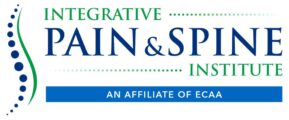Radiofrequency Ablation is a treatment designed to provide relief from severe pain in the back or neck. It uses the heat generated by radiofrequency waves to interfere with the nerves‘ ability to send out pain signals. The heat generated by these waves is delivered to targeted nerve areas through special needles that are inserted, just above the spinal area, through the skin.
Radiofrequency Ablation does not usually provide permanent pain relief; its goal is to significantly decrease neck or back pain. Patients who have been previously unresponsive to more conservative methods of treatment, such as physical therapy or pain medication, are often candidates for this procedure.
Candidates for Radiofrequency Ablation
People experiencing chronic back or neck pain are considered good candidates for radiofrequency ablation. Patients who are taking blood-thinning medications are generally not good candidates because blood thinners can cause adverse reactions when mixed with the medication that is administered during radiofrequency ablation.
A series of diagnostic tests are performed to determine whether radiofrequency ablation will be beneficial for the patient. The diagnostic testing process begins with the injection of a small amount of numbing medication into the area where the pain is located. The areas of the body that have been numbed by the medication are the locations where the radiofrequency needles are placed. Once the needles have been inserted, the patient‘s pain level is tested. If the pain gradually lessens, the patient is a good candidate for neurofrequency ablation.
The Radiofrequency Ablation Procedure
Radiofrequency Ablation is performed as an outpatient procedure in a doctor‘s office, and is usually completed within an hour. The procedure begins with the placement of an intravenous (IV) line into the patient‘s arm or hand. The IV is used to administer medication that keeps the patient comfortable and relaxed during treatment. A specialized X-ray machine, known as a fluoroscope, provides information that allows for the most accurate positioning of the radiofrequency needles. This ensures that only the targeted nerve tissues are affected, and that the healthy surrounding nerve tissues remain undamaged.
Risks of Radiofrequency Ablation
The risks of radiofrequency ablation vary. Some patients experience mild and temporary discomfort/reactions, while other patients experience serious and long-term pain or discomfort. Complications include the following:
- Temporary pain/numbness where the needles were placed
- Persistent numbness that cannot be resolved with medication
- Paralysis
Another possible complication of radiofrequency ablation is bowel or bladder incontinence.
Recovery from Radiofrequency Ablation
Patients can return home immediately following radiofrequency ablation. The recovery process varies from patient to patient, though most patients need only a few days to recover. One of the most commonly reported side effects of the procedure is mild, temporary soreness throughout the body; it is typically treated with rest, or over-the-counter pain medication.
Results of Radiofrequency Ablation
Neurofrequency Ablation is more successful in some patients than others. The relief the procedure provides is only temporary, and lasts anywhere from just a few months to up to 2 years. Neurofrequency Ablation can be repeated if pain recurs.
FAQs
How long does a Radiofrequency Ablation last?
The Radiofrequency ablation procedure typically takes 15-45 minutes. Some patients may experience pain relief immediately while may notice it within 1-2 weeks. Everyone is different but pain relief can last anywhere from 6 to 12 months.
What are the disadvantages of radiofrequency ablation?
Radiofrequency ablations are minimally invasive, safe, and effective for patients. There can be disadvantages such as temporary discomfort, numbness, or tingling at the injection site, as well as a risk of infection or bleeding. In very rare circumstances, nerve damage is a possibility.
How painful is radiofrequency ablation?
Nerve ablations, such as radiofrequency ablations, are typically not painful. They are typically performed under conscious sedation or local anesthesia. Mild tenderness or discomfort at the injection may be experienced by some patients but usually resolves within a day or two.
How long does it take to recover from radiofrequency ablation?
Recovery from RFA is fairly quick. Within 1-2 days patients return to their normal activities.
Do nerves grow back after an ablation?
Yes, RFA damages nerve fibers to block the ability to transmit pain signals. The body has a natural mechanism to repair damaged nerves and it can overtime regenerate them. As the nerve grows, it can resume transmitting pain signals which is why RFA procedures may need to be repeated.
Are you put to sleep for nerve ablation?
No, nerve ablation procedures typically do not require sedation. Patients are awake during the procedure with local anesthetic provided for comfort.
What is the cost of RFA?
The cost of RFA procedure is variable given your insurance details. We accept all major insurances and obtain prior authorization before the procedure is scheduled. For the most accurate information about cost, we would recommend you contact your insurance company.
What is the next step if an RFA does not work?
If RFA does not work, the next step is often to repeat the procedure if the pain returns after a period of time. Your physician may talk to you about alternative options such as epidural injections, spinal cord stimulation, physical therapy, and medications.
